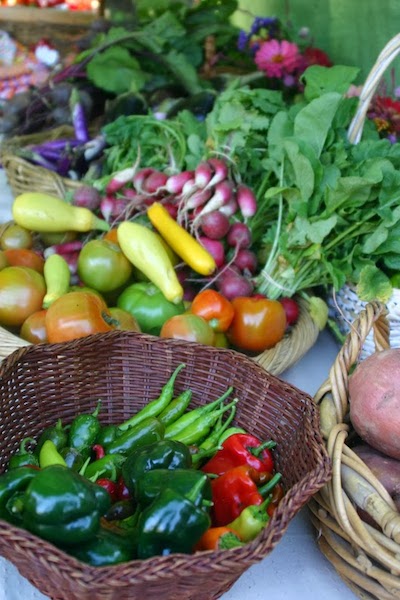
Get growing: Starting a farmers market may be no easy undertaking but there are some resources to get you started. (Photo courtesy of Oakley Farmers Market)
Do you think a tailgate market would be a great addition to your neighborhood? According to Molly Nicholie, program director of Appalachian Sustainable Agriculture Project’s Local Food Campaign, you’re not alone. “We very frequently get requests from community members wanting a market in their community, as well as businesses wanting to host markets at their location,” says Nicholie.
But starting a market is no easy undertaking, she cautions. “The challenge for any new market is that balance between supply and demand,” Nicholie says. “It takes a lot of time and energy for a farm to start selling at a new market and new markets often take a while to build a customer base.” She also notes that with 14 tailgate markets already established in Buncombe County alone, many farmers are too busy to take on new markets. It many cases it may be better to direct the community’s energy toward supporting existing markets, Nicholie says.
But Gladheart Farms farmer Jeff Weaver says, “I know of some farmers that are frustrated about not being able to get into markets, or, if accepted, are limited on what they can sell,” says Weaver. “There is still room for targeted locations which would create possibilities for some of the smaller, startup farms and vendors.”
“I think that there are a lot of neighborhoods in Asheville that could use a small or medium-sized market targeted to the population that lives there,” says Oakley Farmers Market organizer Josh O’Conner. “In my opinion, it’s all an issue of scale, and it may be as simple as having one or two vendors.”
Here are a few tips from ASAP and the coordinators of the Oakley Farmers Market for those considering starting their own neighborhood market:
• Find your worker bees: Form an energetic, hands-on market committee.
• Decide on size: Consider the needs of the neighborhood and how much market it can support.
• Create a mission/vision statement: Articulate what you want your market to accomplish.
• Do a market study: This can be as simple as looking at the number of residents in the neighborhood and the distances to surrounding markets.
• Find a location: Connect to churches, community organizations or even businesses — preferable situations would offer visibility, ample parking and free rent.
• Explore other markets: Make relationships with vendors and learn about what you want from your market.
• Market the market: Social media and the Nextdoor social group are useful for organizing volunteers. Ultimately, word of mouth is key for bringing in traffic.
• Talk to ASAP: The organization is an invaluable resource.
• Keep it truly local: Reach out to farmers and vendors who live as close to your neighborhood as possible.
• Start small: Focus on the basics first — produce, meat and dairy. These are the things people want most at a market.
To find a farmers market near your community visit www.appalachiangrown.org or visit ASAP’s market calendar at fromhere.org/events/category/farmers-market




Before you comment
The comments section is here to provide a platform for civil dialogue on the issues we face together as a local community. Xpress is committed to offering this platform for all voices, but when the tone of the discussion gets nasty or strays off topic, we believe many people choose not to participate. Xpress editors are determined to moderate comments to ensure a constructive interchange is maintained. All comments judged not to be in keeping with the spirit of civil discourse will be removed and repeat violators will be banned. See here for our terms of service. Thank you for being part of this effort to promote respectful discussion.